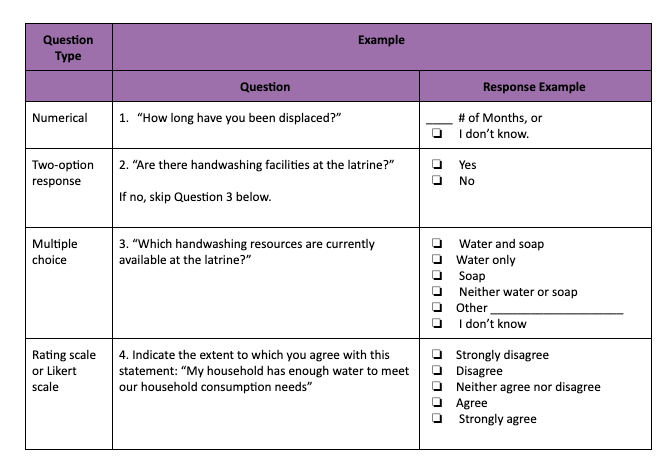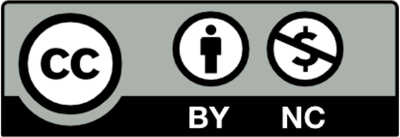Quantitative Data Collection Tools
I want to collect data that can be counted and subjected to statistical analysis...
What are they?
Quantitative data collection tools collect data that can be counted and subjected to statistical analysis.Examples of common quantitative tools are:
- Surveys
- Questionnaires
- Observation checklists
- Physical tests.
Quantitative data helps teams track progress towards targets, make informed decisions, report to donors and communicate to communities.
How do I use them?
First, check your Performance Management Plan (PMP). The PMP identifies the indicators that require quantitative data and the corresponding quantitative data collection tool you will need. For example, an indicator stating that “30 latrines have soap and water present” may use an observation checklist to gather this monitoring data.
Then, design or adapt your tool.
Before you build tools from scratch, always look for existing questionnaires, checklists, or tests that can be adapted to your specific purpose.
Keep in mind that good quantitative tools follow a logical flow that makes sense to the person administering it, and to anyone who might be responding to questions. Tools should always begin with an introduction outlining the purpose of the data collection efforts, the ethical norms that govern the use of the tool and the data collected, and how the data will be used.
The next section of a quantitative data collection tool focuses on the questions themselves. Questions from quantitative data collection tools are most often closed-ended questions and are asked in a pre-planned logical order.
Closed-ended questions require respondents to reply using a limited number of answers. Question types include numerical, two-option response, multiple choice, and rating/Likert scales.

Questionnaires often include “skip logic” sequencing, allowing the respondent to skip irrelevant sections when necessary.
Finally, end your quantitative tool with a conclusion, thanking the respondent for their time and allowing them to ask questions.
Before you use any quantitative data collection tool, make sure to follow these steps:
- Step 1: Translate the tool into any local languages required
- Step 2: Train staff and test the tool
- Step 3: Revise and finalize your tool based on the results of your testing
- Step 4: Plan for implementation and data management.
These data collection plans should consider both timing and location. Also, plans should detail the specifics of data entry and cleaning, data quality checks, data storage and protection, and data privacy.
When do I use them?
Quantitative data collection tools are used for both project monitoring and project evaluation data collection efforts. For example, an observation checklist might be used on a monthly basis to count distribution levels or class attendance. Evaluations, mostly conducted at the mid-term or end of a project, often include questionnaires that collect data in accordance with the evaluation questions.
No matter the timing of the tool, remember to allocate enough time for the design, testing, and implementation of the tool. Managing data (entering, cleaning, quality checking, etc.) so that it can be analyzed can take more time than expected. Thus, always ensure that your quantitative data collection efforts are incorporated into the overall project implementation plan.
Tips:
Keep it Simple
Remember that data collection is time consuming and expensive. Show respect to respondents and save resources by keeping your tools simple, efficient, and short. Make sure that your checklists and questionnaires focus only on the information required in the PMP.
Supported by:
Shared by:
Users are free to copy/redistribute and adapt/transform
for non-commercial purposes.
© 2022 All rights reserved.




